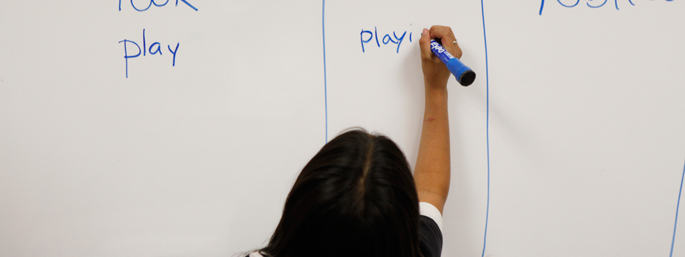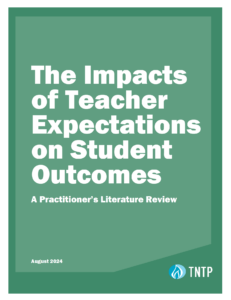Yesterday, Tim wrote about the highlights of the new state-imposed teacher evaluation system in New York City. You should read the whole thing, but the short version is that it represents a huge step forward from the old widget effect-era system.
If you don’t spend your days following New York politics, you may be struggling to understand what’s happening here. I want to share a few thoughts on the broader implications of this development, which brought an end to a three-year saga featuring nearly every major player in New York politics. I spent six years as chief of labor policy at the New York City Department of Education, so I’ve seen first-hand how these big policy fights reverberate across the city’s political scene and across the entire education policy world. Here’s what I’m taking away from this one:
- Governor Cuomo got the job done. He refused to let New York’s 2010 evaluation law succumb to stall tactics and stood up again and again to defend the spirit of the law. He pushed through two separate legislative changes to help break logjams in New York City’s negotiations with the United Federation of Teachers, including one earlier this year that empowered Commissioner King to impose an evaluation system if the two sides couldn’t agree. Without that intervention, there is virtually no chance the city would have a new evaluation system today. Governor Cuomo was committed to getting better teacher evaluations in place in New York City and across the state, and he spent a lot of political capital to make it happen.
- Commissioner King delivered a fair, practical decision. Because of the way everything played out, the success of the new evaluation system rested heavily on Commissioner King’s credibility as a fair arbitrator. He managed to stay above the political fray throughout the process and was careful not to talk about the issues in terms of wins or losses. He crafted a thoughtful decision that attended to concerns from both sides, but didn’t simply split the difference between them. And under a very tight timeline, he formulated a final decision that is detailed enough to avoid further litigation and will provide clear, practical guidance for implementation next fall. The fact that news coverage has focused on the deal and not the arbitrator is a good sign.
- Mayor Bloomberg was vindicated. The last time Mayor Bloomberg went all-in on an education policy fight in Albany—his attempt to reform quality-blind teacher layoff rules—he lost (although, in my view, he was on the side of the angels). For a long time, it looked like his persistent effort to get better teacher evaluations in New York City would end the same way, either with a watered-down system or none at all. In the end, he won a signature victory that will rank among the few most important on education during his three terms in office. He and Chancellor Walcott took a big risk by turning down a process-heavy, temporary deal with the UFT, instead pushing Commissioner King to intervene and banking on getting a better deal from arbitration. That bet paid off.
- Race to the Top lives. The whole idea behind Race to the Top (now four years old) was that with just a tiny fraction of the federal education budget, the U.S. Education Department could encourage states across the country to write important policy changes into law, where those reforms would have staying power beyond the initial grant competition. The New York saga shows exactly why this strategy was so smart. New York wrote its evaluation law in order to strengthen its Race to the Top application, and that law is the only reason New York City has a new evaluation system today. The interest groups that usually find ways to water down reforms couldn’t find a way around the law, especially when Governor Cuomo was so vigilant about enforcing it. You have to think that Arne Duncan and his team feel vindicated.
- Michael Mulgrew faces an important choice. UFT president Michael Mulgrew clearly didn’t get the evaluation system he wanted, but he now faces a clear choice: he can refuse to engage with an administration he doesn’t like, wait for problems to crop up with the new evaluation system and then toss grenades from the sidelines. Or he can put aside his differences with Mayor Bloomberg and direct all of his significant personal and institutional resources towards making the new system a success for teachers, schools and students. While the first option would certainly appeal to the union stalwarts that helped elect him—and there are early signs that he is leaning toward this path—the cynicism and rancor it would create around the new system would be terrible for the schools I know he cares about deeply. Implementing a new evaluation system across 1,700 schools is a daunting task, but if Mulgrew helps guide the process through the inevitable hiccups, his members will end up with the professional standards, feedback and support they deserve.








